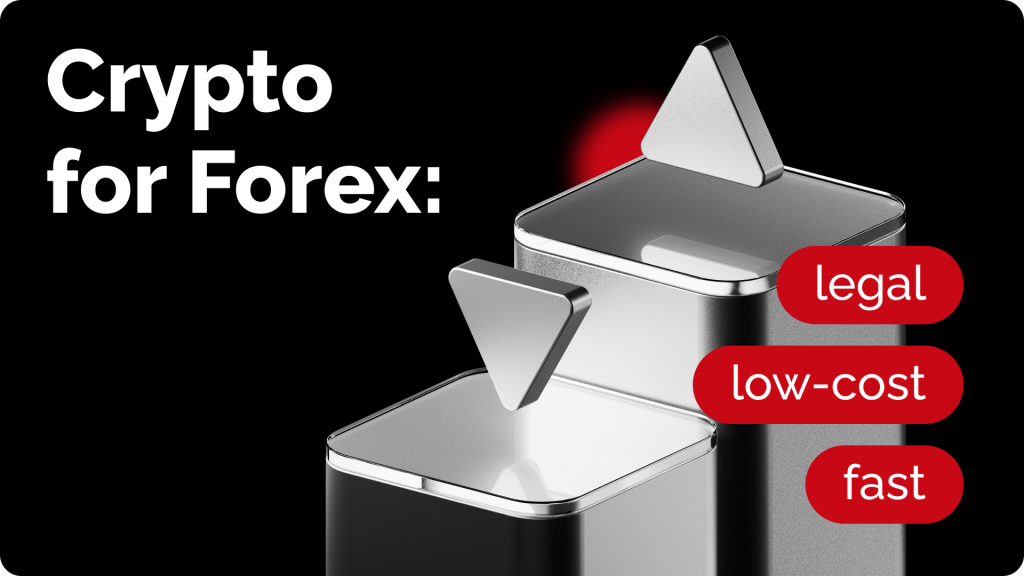The P2E Revolution: Play-to-earn Gaming And Its Effect On The Cryptocurrency Landscape
n May 2021, a 22-year-old named John Aaron Ramos from the Philippines became an unexpected hero, captivating the hearts and imaginations of many. Ramos accomplished what many dream of but few achieve at his age – purchasing not one, but two homes.
What makes his achievement even more extraordinary is that he didn’t achieve this through a decade of rigorous savings or by inheriting a significant sum of money. Instead, he accomplished it through a groundbreaking digital gaming concept called Play-to-Earn, abbreviated as P2E.
Ramos’s success story was penned in the virtual world of Axie Infinity. This innovative game blends the collectible charm of Pokémon Go with the financial allure of an NFT marketplace, where vibrant creatures called Axies duel in a digital coliseum for rewards that translate into real-world currency.

Ramos’s journey to financial freedom was shared with the world through a Facebook post that quickly went viral. He was pictured celebrating outside his new, bright yellow abode, embodying hope and ambition behind his glasses, with a peace sign held high. Alongside a snapshot with his property deed, Ramos expressed his gratitude towards Axie Infinity, crediting his strategic engagement with the game’s community and his meticulous research for his success.
Ramos’s journey to financial freedom was shared with the world through a Facebook post that quickly went viral. He was pictured celebrating outside his new, bright yellow abode, embodying hope and ambition behind his glasses, with a peace sign held high. Alongside a snapshot with his property deed, Ramos expressed his gratitude towards Axie Infinity, crediting his strategic engagement with the game’s community and his meticulous research for his success.
This story of triumph resonated deeply within the gaming community, inspiring others with aspirations of replicating Ramos’s success. However, when zooming out, the ability for gamers to monetize their time isn’t the only fascinating aspect of P2E – this is a niche use-case for the blockchain that is having ripple effects throughout both the Web3 and Web2 digital communities.
Today, we level up our knowledge on this very topic.
What is Play-to-Earn (P2E) Gaming?
Play-to-Earn (P2E) gaming is a fairly new idea, and combines blockchain technology, smart contracts, and non-fungible tokens (NFTs) to create an ecosystem where players can earn real-world value by participating in virtual game worlds. Despite its novelty, this is an industry that is projected to reach around 6.3 billion dollars by 2031, demonstrating a CAGR of over 21%. So, what’s the appeal?
We all know Minecraft – this game has sold over 300,000,000 copies worldwide. Imagine that for every diamond you mine in the game, you receive a small amount of cryptocurrency. While this is not yet the case with Minecraft specifically, P2E games are trying to make such a model of game-time monetisation feasible.
In P2E games, players have the opportunity to accumulate in-game assets and tokens, which can be traded or converted into real money. This innovative approach has transformed the traditional gaming experience into a lucrative and immersive venture.
With P2E, the boundary between the virtual and real worlds blurs, as players are now incentivized to engage more deeply with games and their communities. Indeed, the appeal of P2E gaming lies in its potential for players to earn a living or at least supplement their income through gameplay. It offers an inclusive environment where players from various backgrounds can participate, fostering a sense of ownership and belonging. Additionally, P2E games often emphasise skill-based gameplay and strategic decision-making, making them not only entertaining but also intellectually stimulating.
HOW DOES THE BLOCKCHAIN COME INTO PLAY?
n P2E games, blockchain enables players to have true ownership of in-game assets, as they are stored on a public ledger, making them resistant to fraud and manipulation.
Smart contracts, self-executing contracts with the terms directly written into code, play a pivotal role in P2E gaming. These contracts govern the rules of the game, ensure fairness, and automatically execute transactions when predefined conditions are met. This automation simplifies in-game economies, allowing for seamless trading, rewards distribution, and governance within the game world.
Also, NFTs have transformed how players perceive digital collectibles, as they can be bought, sold, and traded both within and outside the game environment. This has opened up exciting opportunities for gamers to monetize their in-game achievements, such as rare skins, weapons, or characters.

Taking our Minecraft example – imagine if you could create a unique suit of armour from rare materials, then mint that very combination as an NFT which could be sold to fellow players, for cryptocurrency, enabling them to benefit from the armour’s in-game damage resistance and style. This is exactly how many P2E games utilise NFTs.
The P2E Gaming Ecosystem as it Stands
In 2023, the landscape of P2E gaming is diverse, with titles ranging from strategic card games to expansive virtual worlds. Axie Infinity, Gods Unchained, and Decentraland are leading the charge, showcasing the potential of combining gaming with blockchain for a more immersive and rewarding experience. These platforms not only offer unique gaming experiences but also create opportunities for players to earn through skill, strategy, and participation in the game’s economy. While the immediate market is small in comparison to the larger SAM (Serviceable Attainable Market) of online gaming, over a third (35%) of gamers are moderately interested in participating in blockchain gaming, supporting our earlier conclusions about the potential of this industry.
COMMUNITY AND PLAYER-DRIVEN ECONOMIES
At the heart of the P2E model is the community and player-driven economies, where the value is generated and sustained by the players themselves. Through trading, selling, and leveraging in-game assets, players contribute to a dynamic economy that mirrors real-world economic principles. This participatory approach fosters a deep sense of ownership and engagement, making the gaming experience more meaningful and potentially profitable.
In Axie Infinity, for example, players purchase, breed, raise, battle, and trade fantasy creatures called Axies, which are digital assets represented as NFTs on the Ethereum blockchain. Besides Axies, players can also trade virtual land plots and in-game items, each of which can enhance gameplay or confer benefits in the game’s universe.

EMERGING TRENDS IN P2E GAMING
The P2E gaming sector is rapidly evolving, with new trends emerging that could shape its future. Integration with virtual reality (VR) and augmented reality (AR) offers immersive experiences that could take P2E gaming to new heights, while AI-driven game development promises more personalised and engaging gameplay. These technological advancements, combined with the inherent benefits of blockchain, are set to redefine what is possible in the gaming world.
In Decentraland, for example, VR technology allows players to experience the virtual world in a more immersive and interactive way. Players can explore, interact with other users, and participate in activities as if they were physically present in the game’s environment. AI can be used in future updates to create more dynamic and responsive environments, personalised avatars, and even AI-driven NPCs that interact with players in new, sophisticated ways.
POTENTIAL FOR MAINSTREAM ADOPTION OF P2E GAMES
The unique value proposition of P2E games, where players can earn real money or assets, presents a compelling case for mainstream adoption. As more people become aware of and comfortable with cryptocurrencies and blockchain, the barrier to entry for P2E gaming lowers, potentially bringing a wave of new players into the ecosystem.
Gods Unchained, as a good example, has focused on creating a user-friendly interface that appeals to traditional gamers, reducing the complexity often associated with blockchain and cryptocurrency transactions. By streamlining the process of buying, selling, and trading digital assets, the game makes it easier for newcomers to participate.

How P2E is Shaping the Cryptocurrency Landscape
By merging entertainment with economic opportunity, P2E games are expanding the reach and understanding of cryptocurrencies to a broader, more diverse audience, fundamentally changing the way crypto is used and perceived.
P2E games transform cryptocurrencies from purely speculative assets into functional currencies and investment tools within digital ecosystems. In these games, crypto tokens are not just held for potential value appreciation but are actively used for transactions, purchasing in-game assets, staking, governance, and earning rewards. This utility-driven approach introduces a practical aspect to cryptocurrencies, showcasing their real-world applications beyond investment and trading. As players earn, spend, and manage crypto within these games, they gain firsthand experience with digital currencies, including understanding wallet security, transaction fees, and the fluidity of token exchange rates.
The social impact of P2E gaming is also a powerful catalyst for crypto adoption. In regions with limited job opportunities or during economic downturns, P2E games offer a viable source of income, making the entry into the cryptocurrency market not just accessible but also financially beneficial.
For many, P2E games are their first interaction with cryptocurrencies, serving as an on-ramp into the broader crypto ecosystem. This exposure demystifies digital currencies, encouraging wider acceptance and use of crypto in daily transactions and investments. A new avenue for consumer demand is sure to drive the value of the cryptocurrency market, which will certainly lead to greater institutional and regulatory attention, potentially initiating a snowball effect.
Moreover, the inclusivity and accessibility offered by P2E games have the potential to expand the gaming community significantly. By lowering financial barriers to entry and providing a potential income stream, P2E games make gaming accessible to a wider audience. This inclusivity not only diversifies the gaming community but also introduces gaming as a viable profession to people around the world, further embedding cryptocurrencies into global economic systems.
Challenges and Criticisms of P2E Gaming
Play-to-Earn (P2E) gaming, while innovative and promising, faces several challenges and criticisms that could impact its growth and sustainability. Let’s take a look at a few.
Firstly, we ought to recognise the scalability issue. As P2E games grow in popularity, they face scalability issues, particularly those built on blockchain networks with limited transaction capacity. High demand can lead to network congestion, slow transactions, and increased fees, detracting from the user experience.
Then, there is the environmental impact of blockchain technology. Especially when we consider networks that rely on energy-intensive proof-of-work (PoW) consensus mechanisms such as Bitcoin, it is a significant concern. The carbon footprint associated with mining and transactions can be substantial, raising questions about the sustainability of blockchain-based games.
Also, the integration of real-world value through cryptocurrencies in games blurs the lines between virtual economies and traditional financial systems, leading to regulatory ambiguities. Different jurisdictions may have varying approaches to cryptocurrencies, NFTs, and digital assets, complicating the global operation of P2E games. Indeed, projects will likely be obliged to navigate complex regulatory landscapes, including anti-money laundering (AML) and know your customer (KYC) regulations – this can be challenging, especially for independent developers.
Being such a novel concept that isn’t fully regulated, there’s a risk that P2E games could exploit players, particularly in regions with limited economic opportunities. Players might invest significant time and resources with unrealistic expectations of earnings, potentially leading to exploitation or unhealthy gaming habits.
Moreover, the P2E model can exacerbate inequalities within games, where early adopters or those with more resources to invest can earn significantly more than others. This imbalance could lead to a pay-to-win dynamic, undermining the fairness and enjoyment of the game.
Solutions
Scalability is a long-standing barrier, but not an insurmountable one. Developers are exploring solutions like layer-2 scaling*, alternative consensus mechanisms, and sidechains to address scalability and environmental concerns. These technologies can reduce transaction costs and energy consumption, improving the sustainability of P2E games. Ultimately, we are faced with a matter of ‘when’ these solutions become efficient enough to handle exponential P2E user demand and not ‘if’.
*We will be sure to explore layer-2 scaling concepts in a later article, as they, in and of themselves, are effecting the cryptocurrency landscape with great force.

Additionally, the transition from energy-intensive Proof of Work (PoW) to more sustainable consensus algorithms such as Proof of Stake (PoS) has been a significant focus in recent years. As the environmental impact of cryptocurrency mining, particularly those utilising PoW, has come under scrutiny, the industry has seen a notable shift towards greener alternatives that we expect to see grow with time.
Regarding the legal landscape surrounding cryptocurrencies and P2E, recognition from regulatory bodies is now undeniable, presenting a regulatory environment that, compared to a decade ago, has drastically transformed and become significantly more defined.
For example, in the European Union, the Markets in Crypto-assets (MiCA) regulation, which was formally approved in May 2023, represents the world’s first comprehensive set of rules for regulating crypto assets. Clear regulations such as these can provide a stable framework for developers to innovate while protecting players’ interests.
Conclusion
The emergence of Play-to-Earn gaming has ushered in a transformative era in both the gaming and cryptocurrency landscapes, blending entertainment with tangible economic opportunity. By leveraging blockchain technology, P2E games offer players not only the thrill of gameplay but also the chance to earn real-world value, reshaping the traditional gaming model into a lucrative venture.
This revolution is not without its challenges, however. Scalability issues, environmental concerns, regulatory ambiguities, and ethical considerations present hurdles that the industry must navigate to ensure sustainable growth. Despite these challenges, the potential of P2E gaming to democratise economic opportunities and introduce a broader audience to cryptocurrencies is undeniable. The sector’s inclusive nature and the empowerment of players through ownership of digital assets represent a significant shift towards a more equitable digital economy.
As we look towards the future, the continuous evolution of P2E gaming is likely to drive further innovation in blockchain and gaming technologies, potentially leading to the mainstream adoption of cryptocurrencies. With strategic solutions to scalability and environmental impact, alongside proactive regulatory engagement and ethical game design, P2E gaming has the potential to not only persist but thrive.
In conclusion, while the P2E model is still maturing, its impact on the gaming and cryptocurrency sectors is profound. As developers, players, and regulators navigate these new waters, the integration of gaming with blockchain technology promises to redefine the boundaries of digital entertainment and economic participation.






